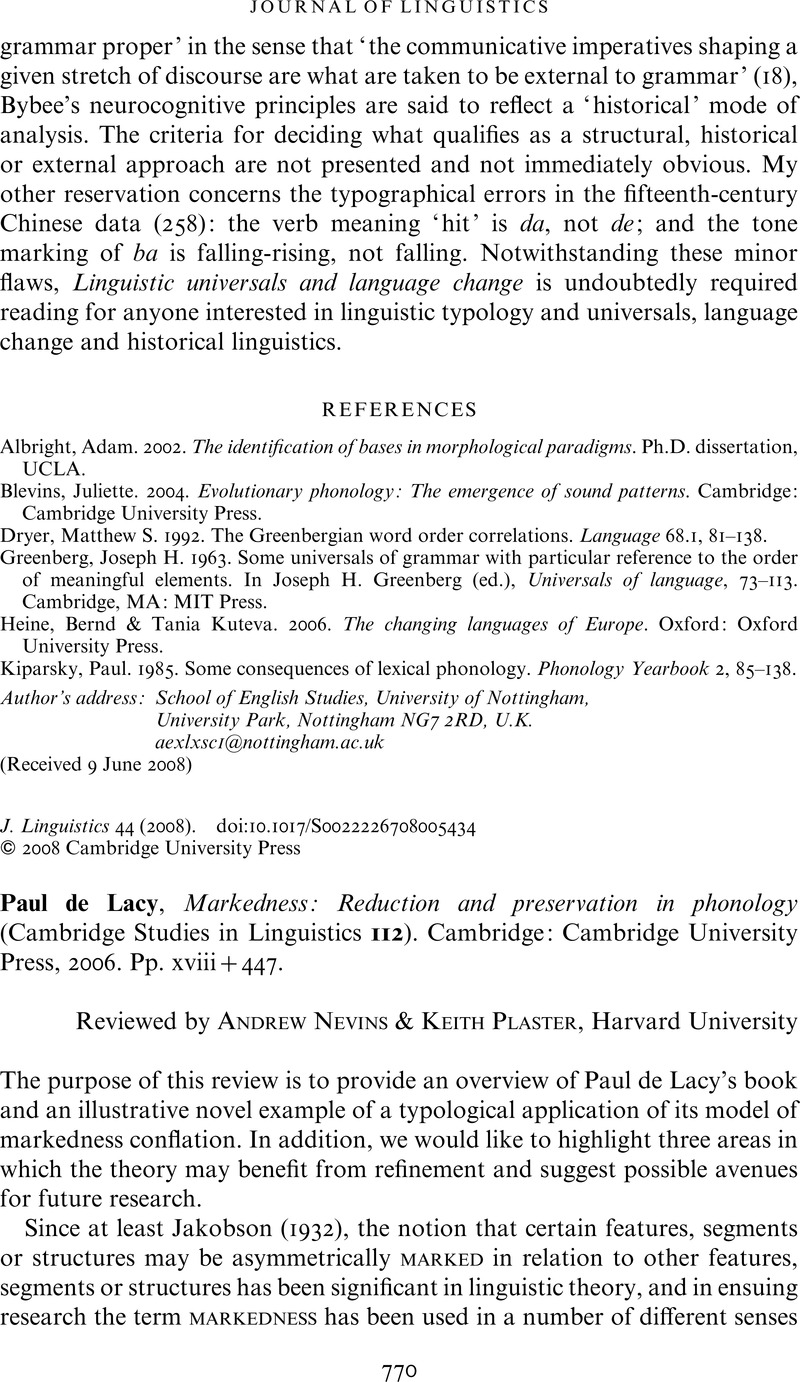Crossref Citations
This article has been cited by the following publications. This list is generated based on data provided by Crossref.
RAMSAMMY, MICHAEL
2013.
Word-final nasal velarisation in Spanish.
Journal of Linguistics,
Vol. 49,
Issue. 1,
p.
215.
Ryan, Kevin M.
2016.
Phonological weight.
Language and Linguistics Compass,
Vol. 10,
Issue. 12,
p.
720.
Vaux, Bert
and
Samuels, Bridget D.
2017.
Beyond Markedness in Formal Phonology.
Vol. 241,
Issue. ,
p.
69.
Ryan, Kevin M.
2019.
Prosodic end-weight reflects phrasal stress.
Natural Language & Linguistic Theory,
Vol. 37,
Issue. 1,
p.
315.
Ryan, Kevin M.
2020.
VV > VC > V for Stress: Coercion vs. Prominence.
Linguistic Inquiry,
Vol. 51,
Issue. 1,
p.
124.



